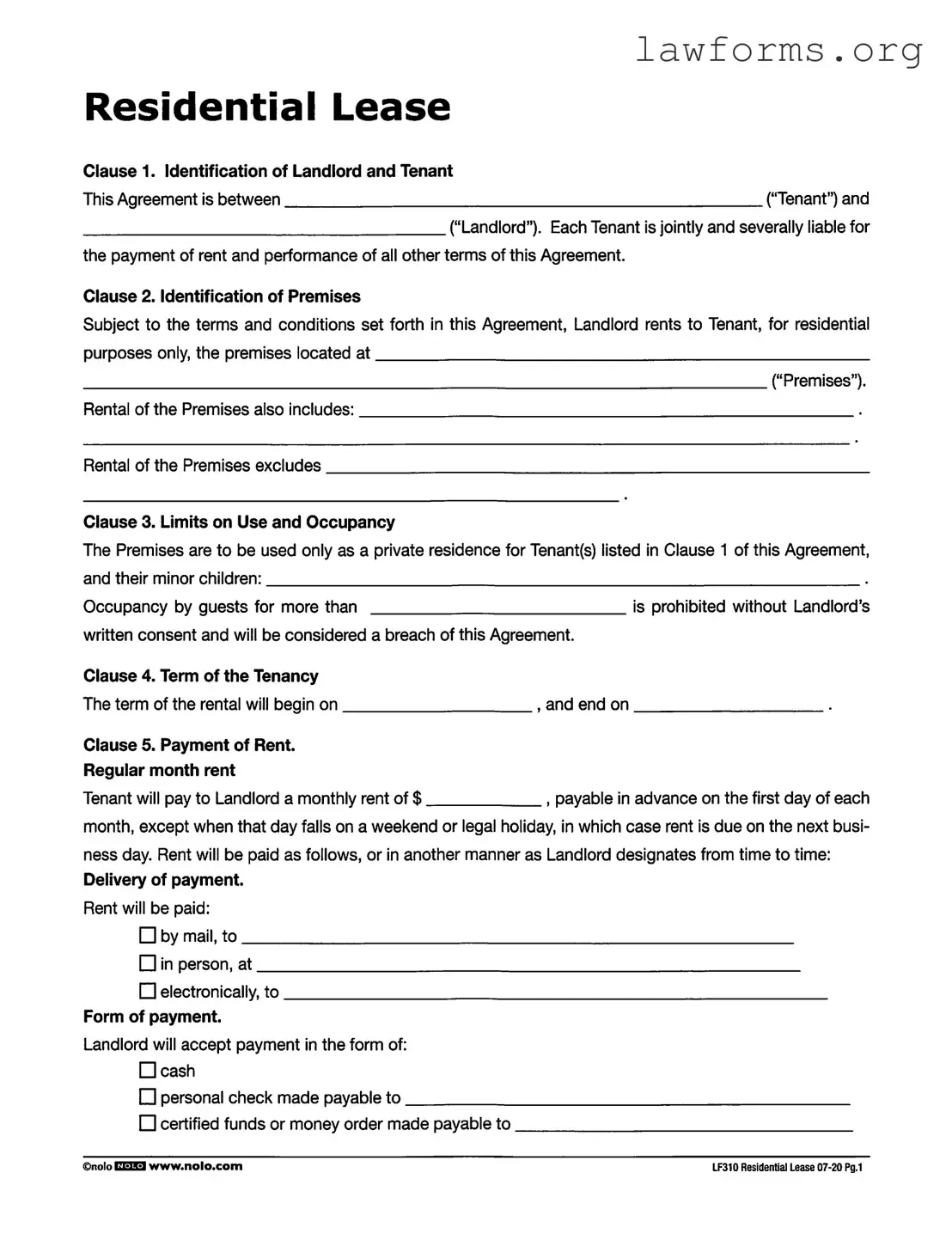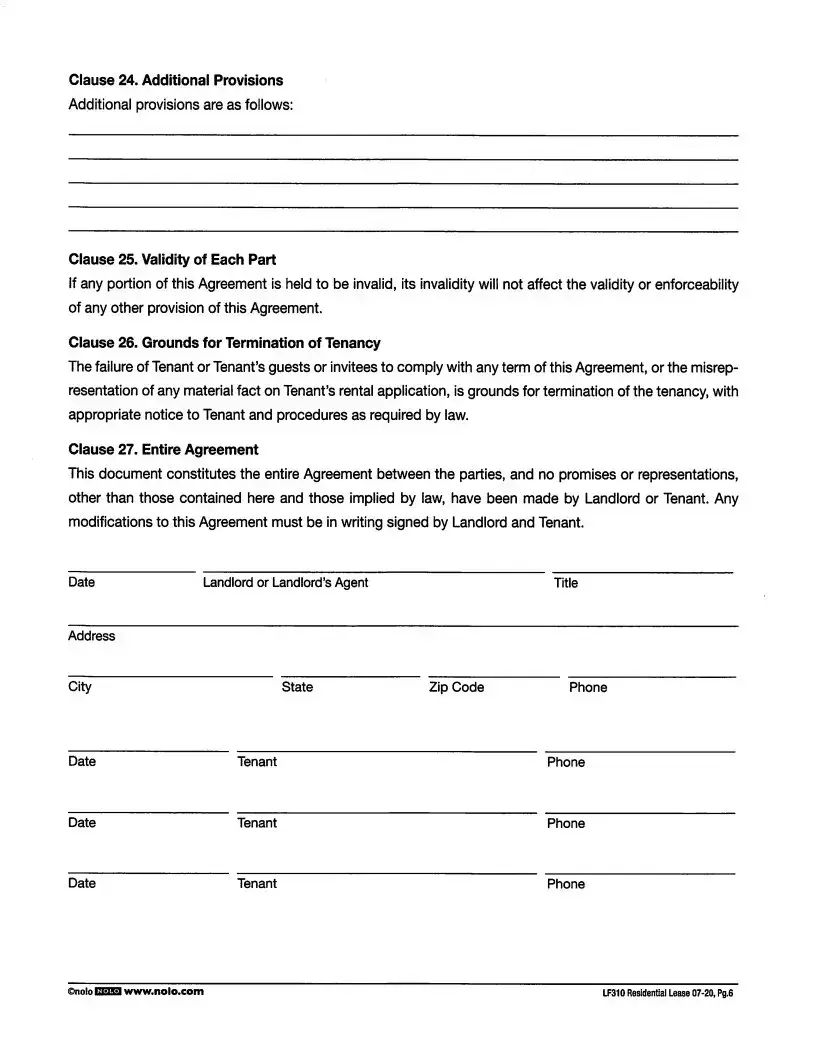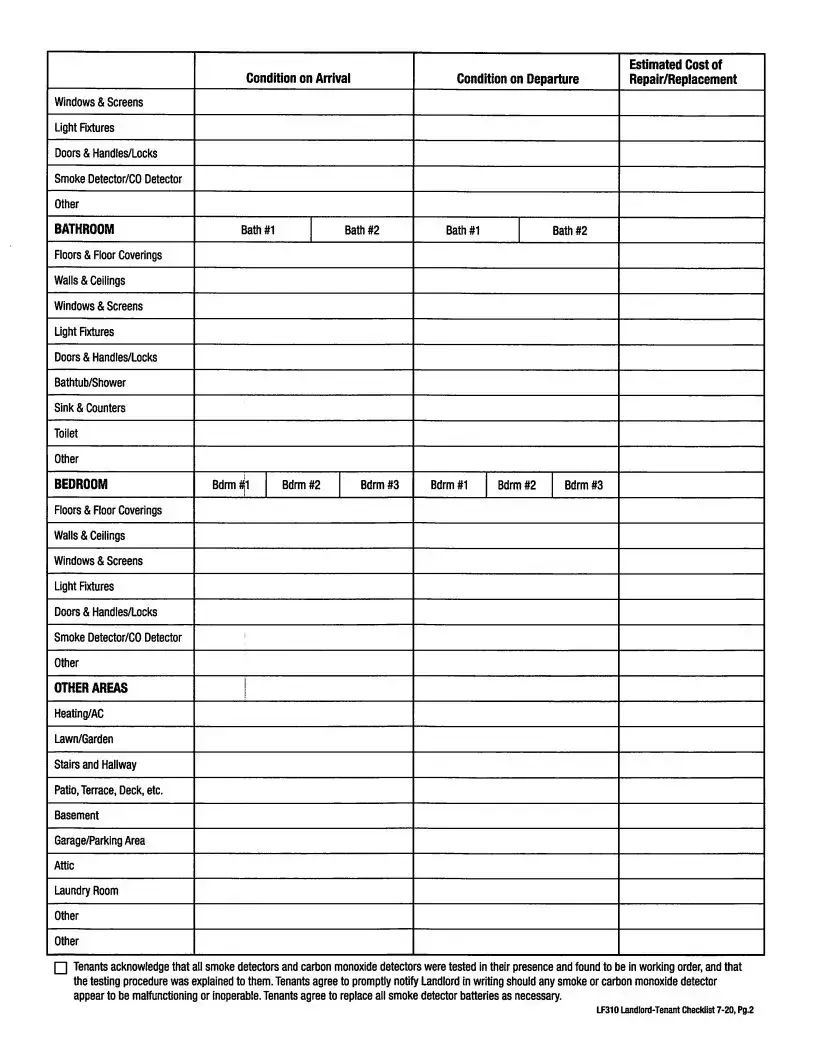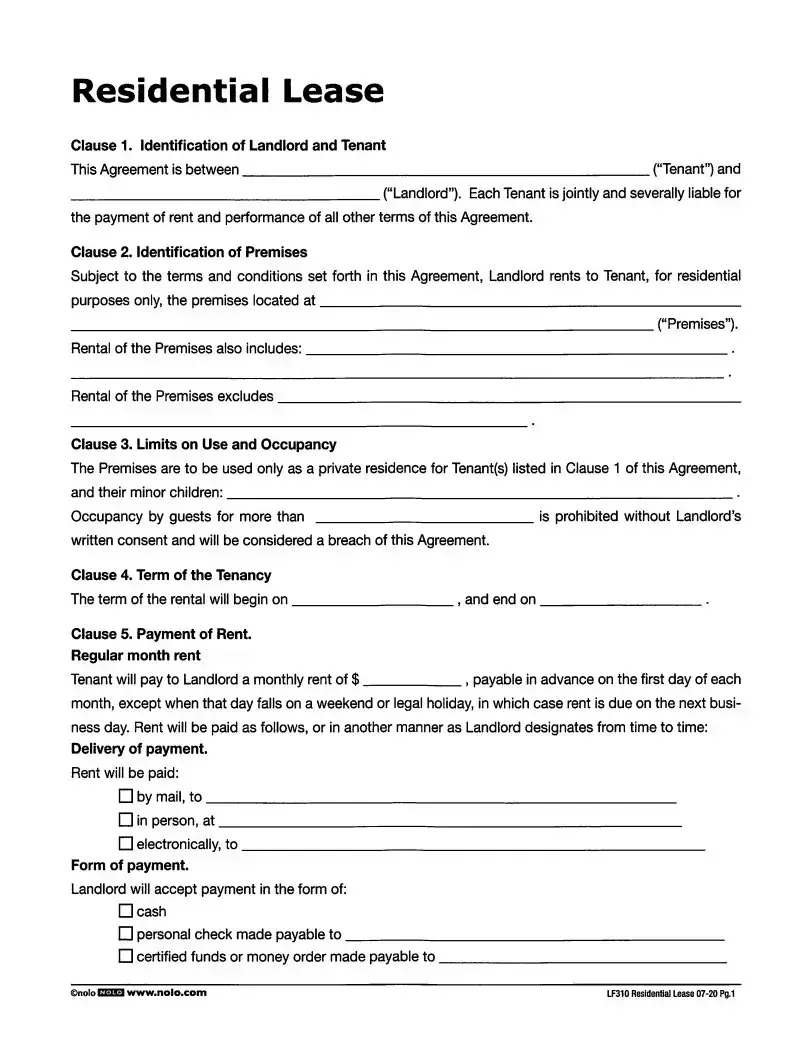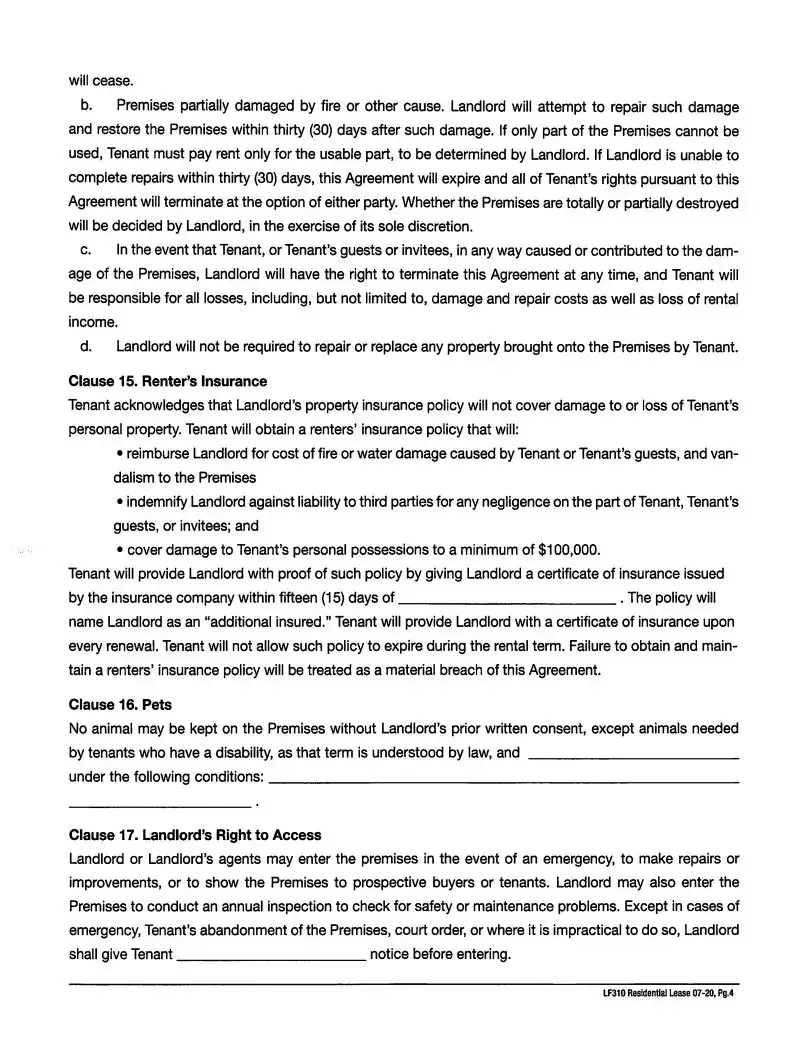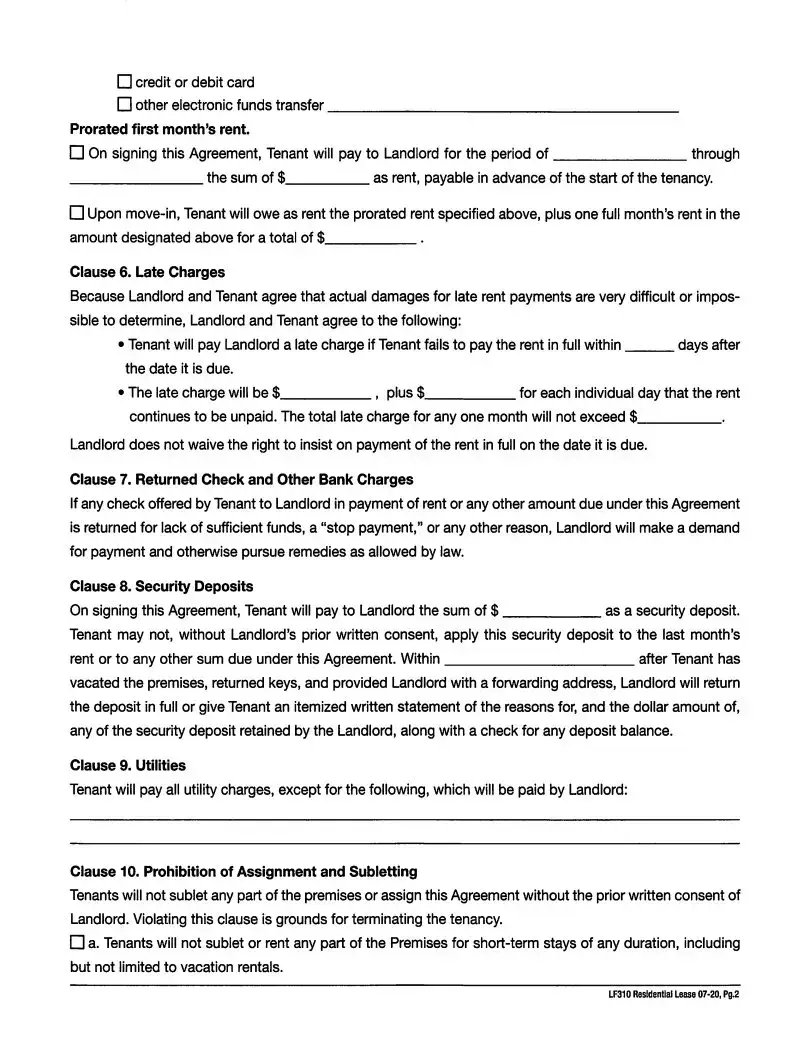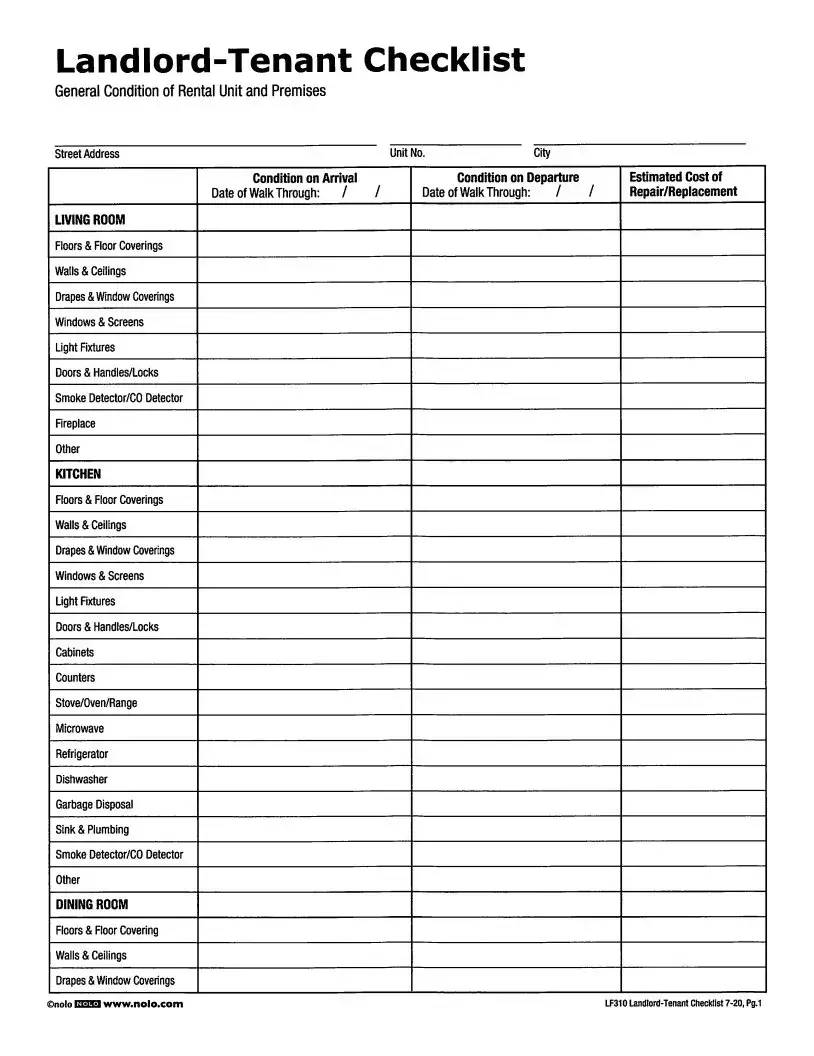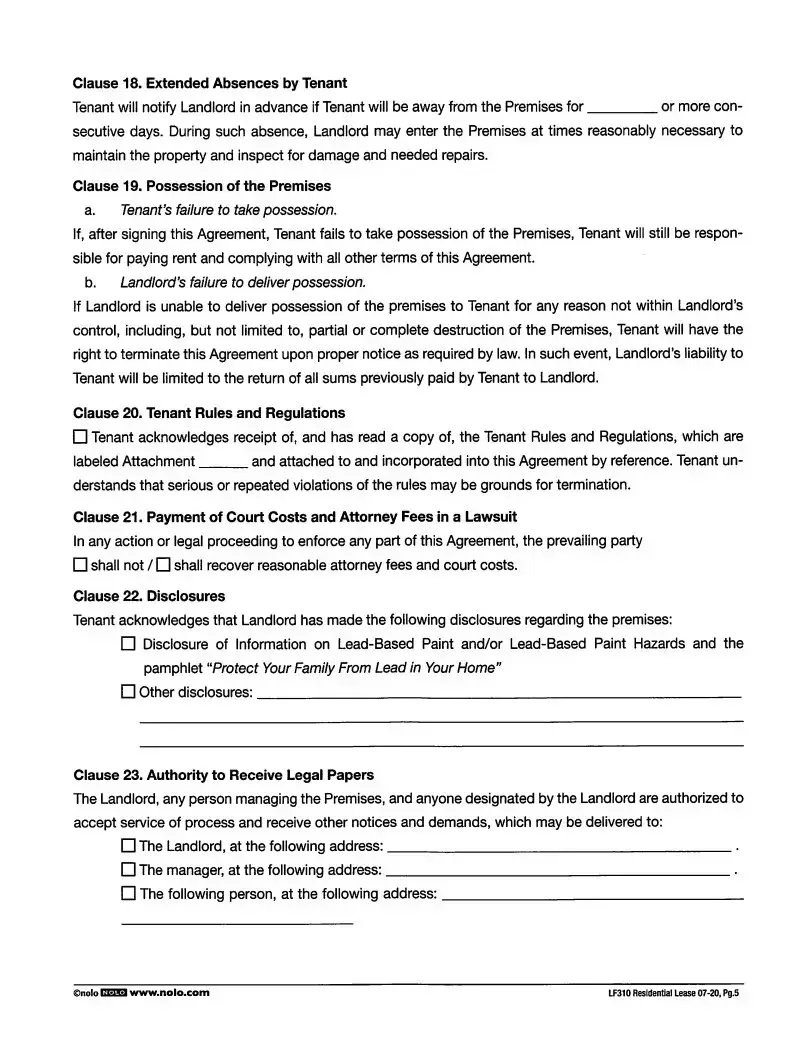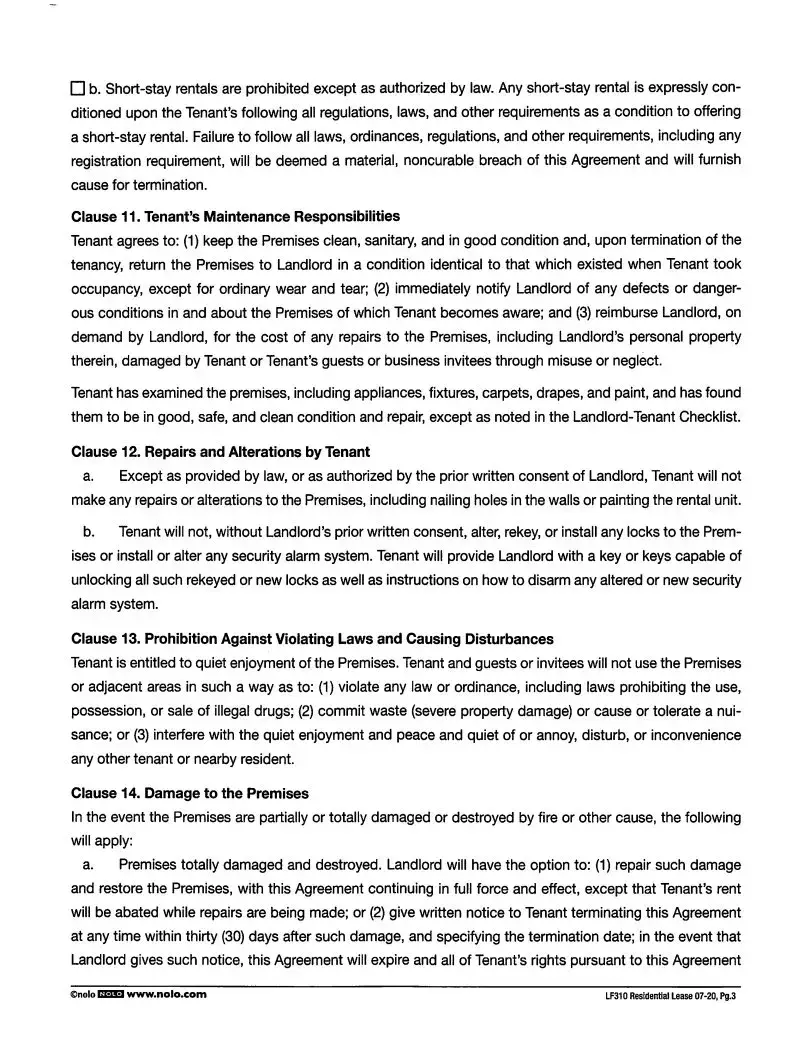Fill Out a Valid Lf310 Residential Lease Template
The Lf310 Residential Lease form is a legal document that outlines the terms and conditions between a landlord and tenant for renting a residential property. This agreement includes essential clauses such as the identification of the parties involved, payment of rent, security deposits, and restrictions on use and occupancy. Understanding this form is crucial for both landlords and tenants to ensure a clear and mutually beneficial rental relationship.
To fill out the Lf310 Residential Lease form, please click the button below.
Customize Document Online
